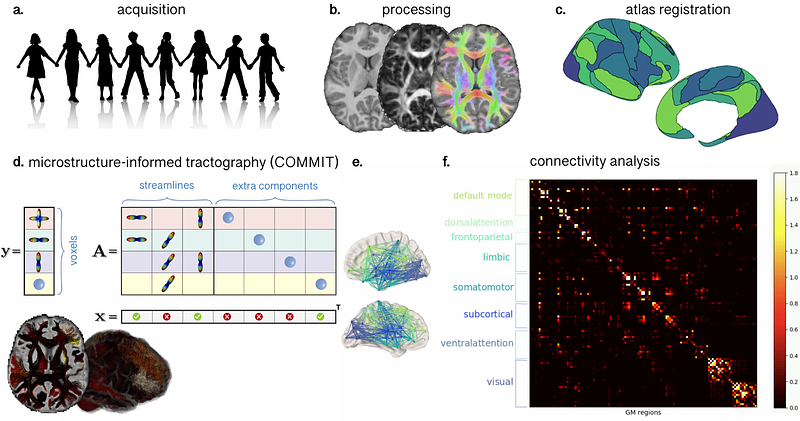Developmental differences in canonical cortical networks: insights from microstructure-informed tractography

Developmental differences in canonical cortical networks: insights from microstructure-informed tractography
Genc, S.; Schiavi, S.; Chamberland, M.; Tax, C. M. W.; Raven, E. P.; Daducci, A.; Jones, D. K.
AbstractThere is a growing interest in incorporating white matter fibre-specific microstructural properties into structural connectomes to obtain a more quantitative assessment of brain connectivity. In a developmental sample aged 8-18 years, we studied age-related patterns of microstructure-informed network properties locally and globally. First, we computed the diffusion-weighted signal fraction associated with each tractography-reconstructed streamline. Then, we generated microstructure-informed connectomes from diffusion MRI data using the convex optimization modelling for microstructure-informed tractography (COMMIT) approach. Finally, we estimated network characteristics in eight functionally defined networks (visual, somatomotor, dorsal attention, ventral attention, limbic, frontoparietal, default mode and subcortical networks). Our findings reveal that throughout child and adolescent development, global efficiency increases in the visual, somatomotor, and default mode networks, and mean strength increases in the somatomotor and visual networks. Nodes belonging to the dorsal and ventral visual pathways demonstrate the largest age-dependence in local efficiency, supporting previous evidence of protracted maturation of dorsal and ventral visual pathways. Our results provide compelling evidence that there is a prolonged development of visual association cortices.